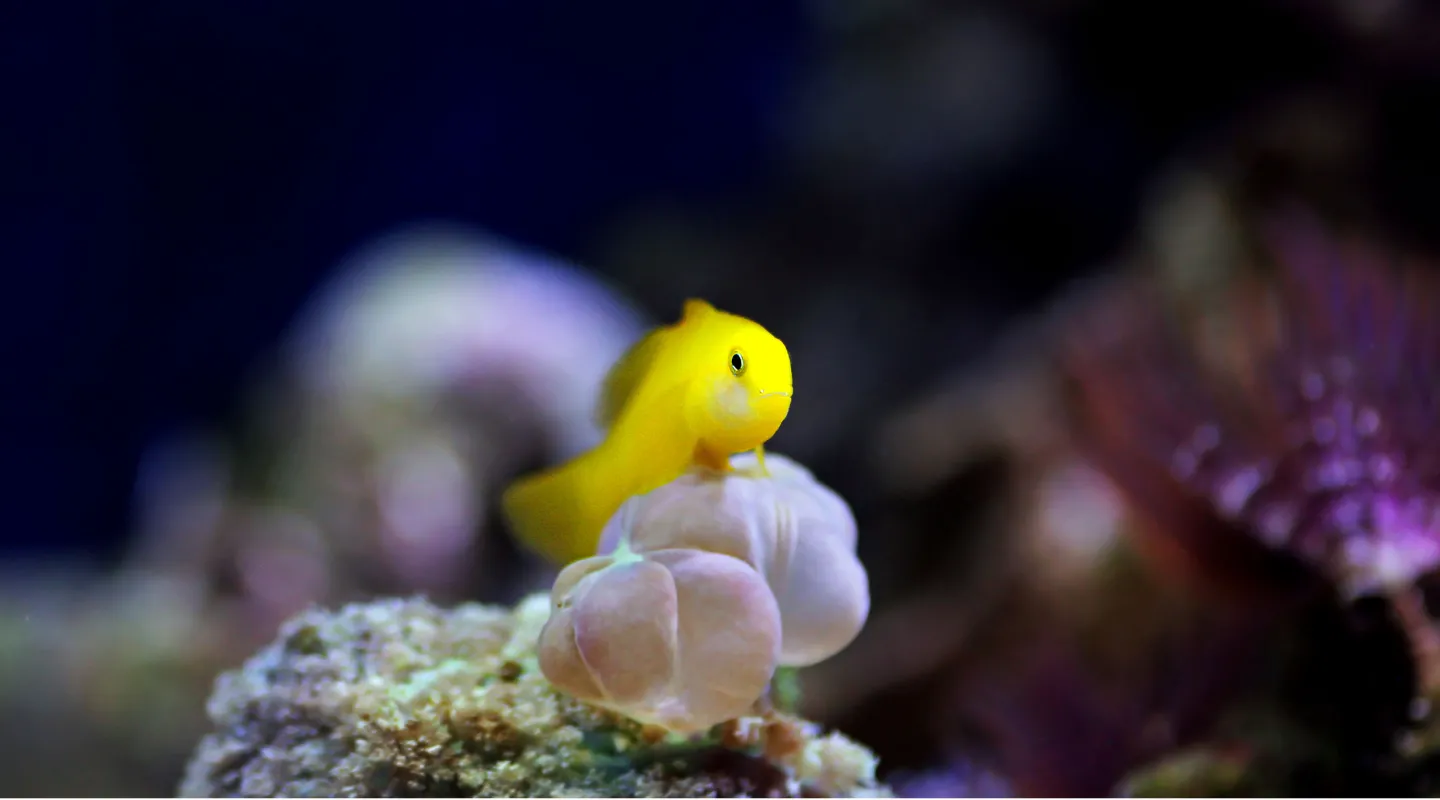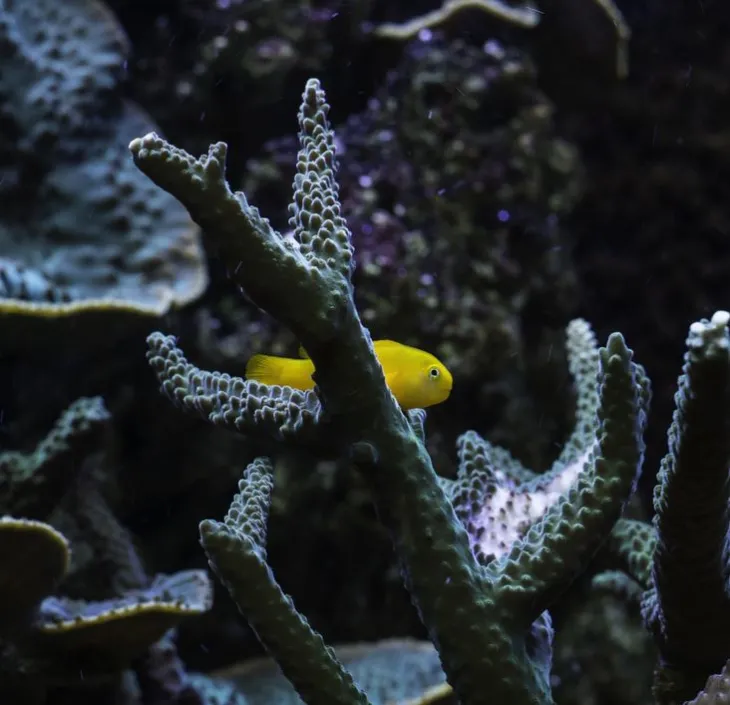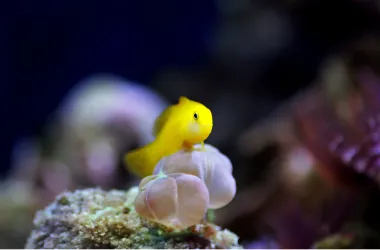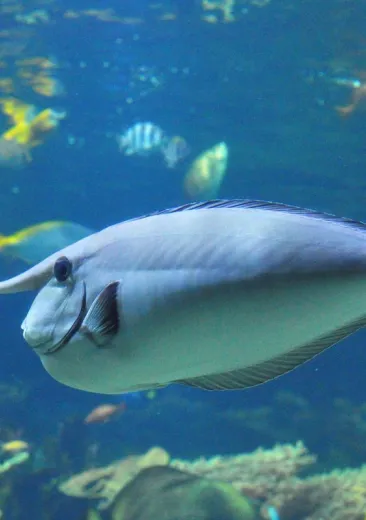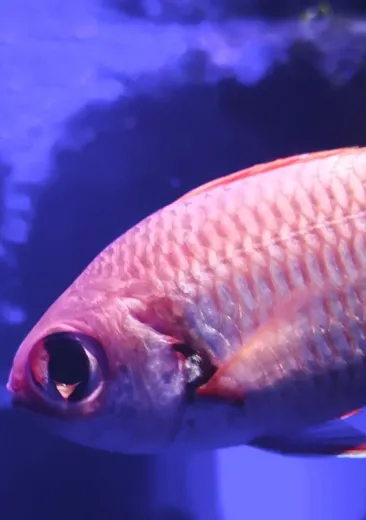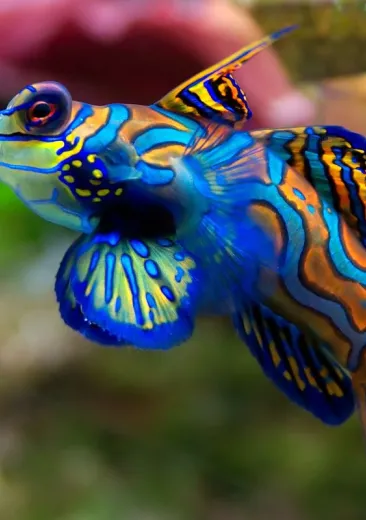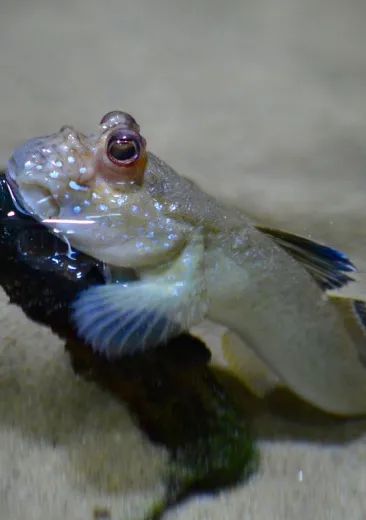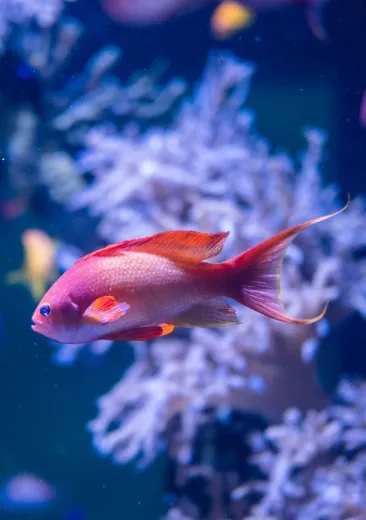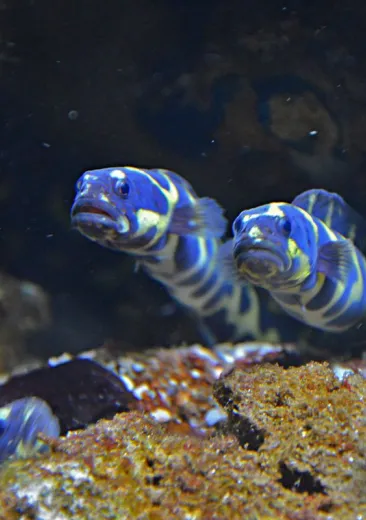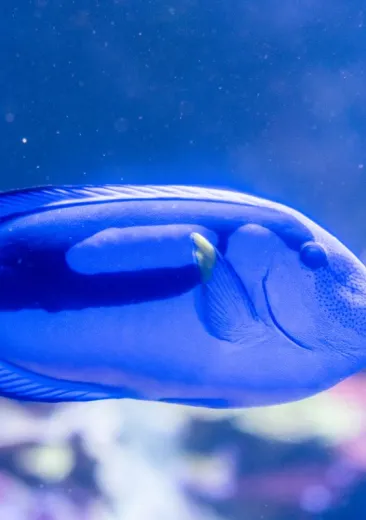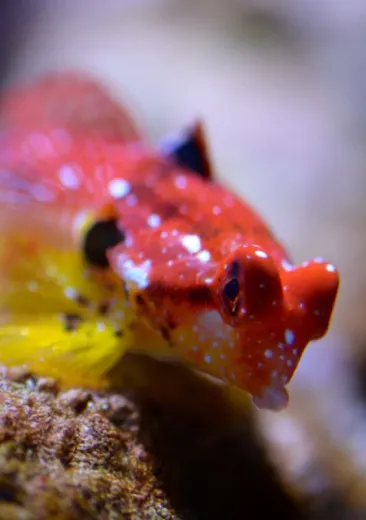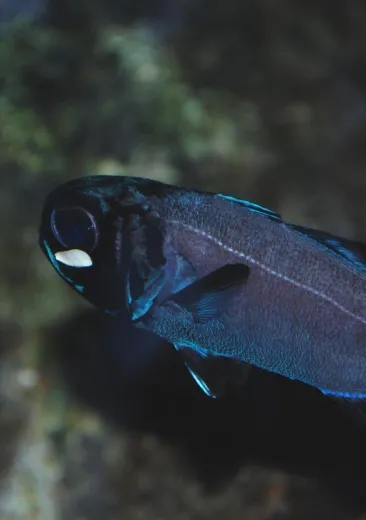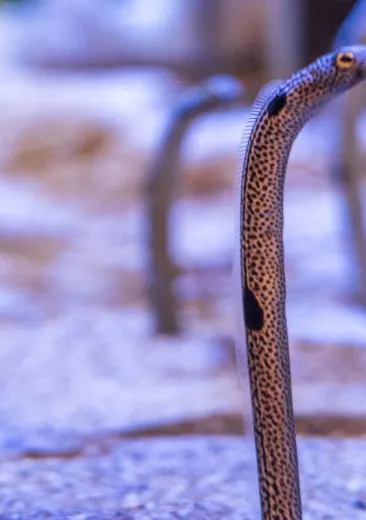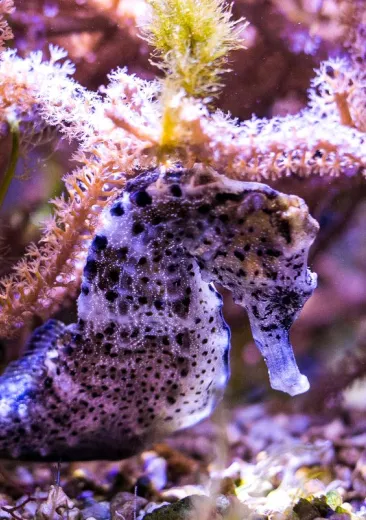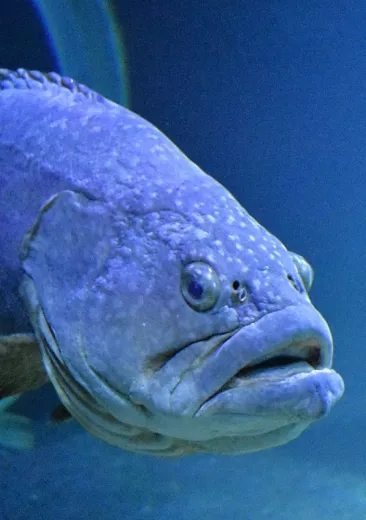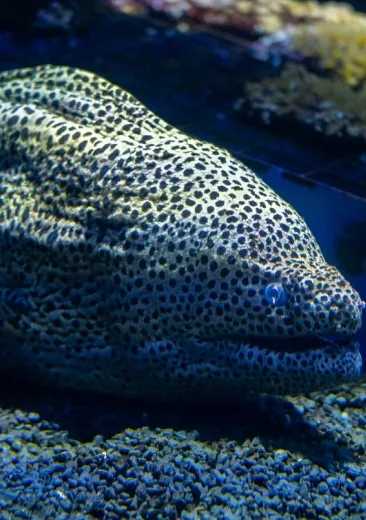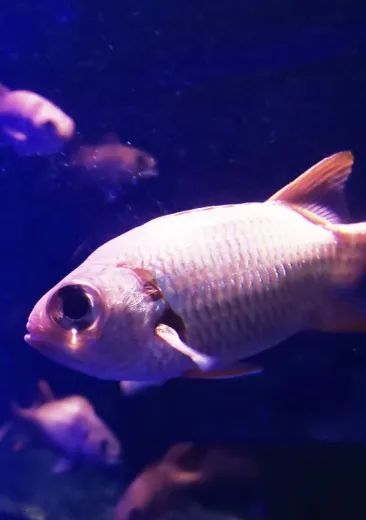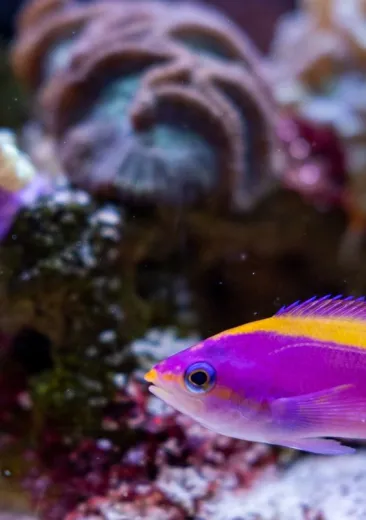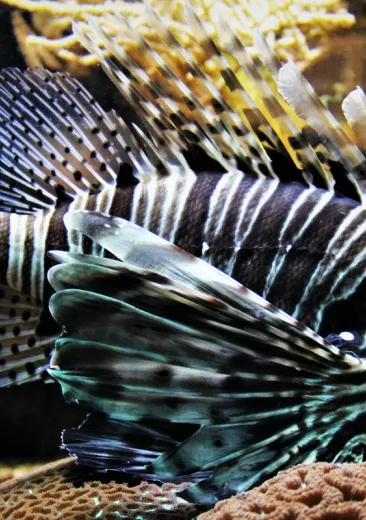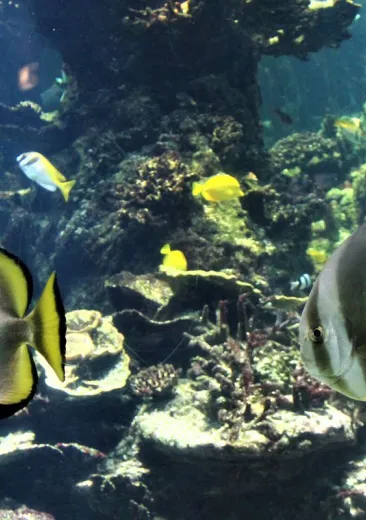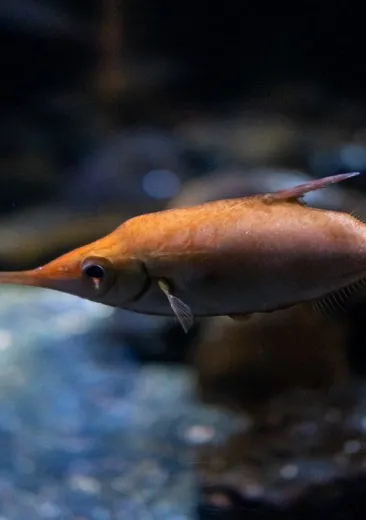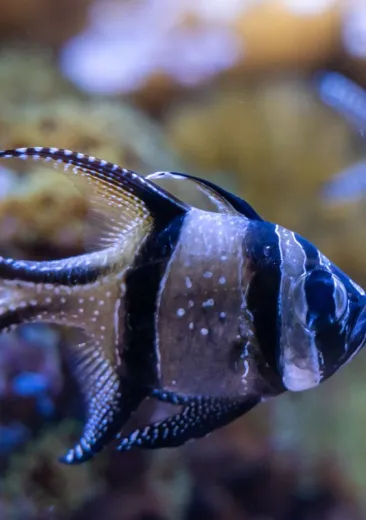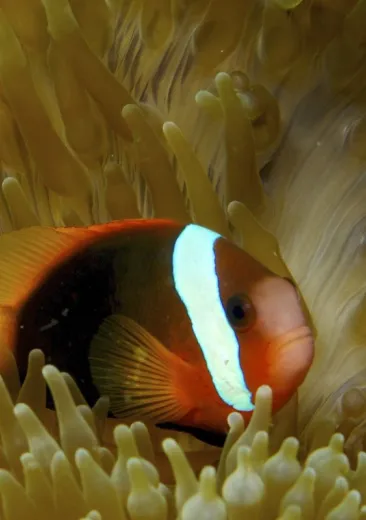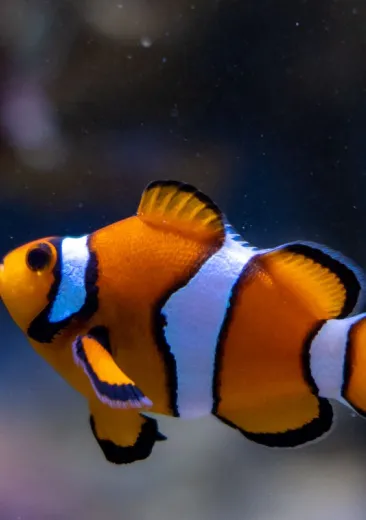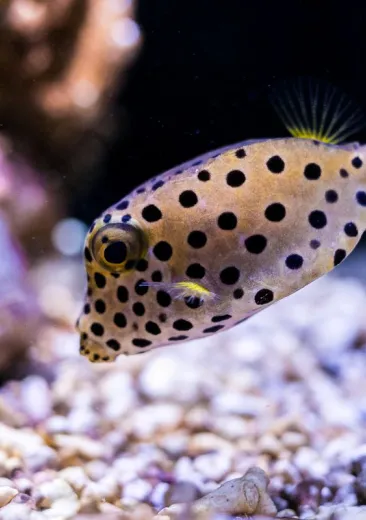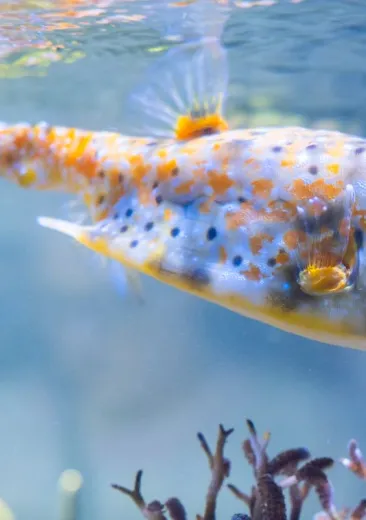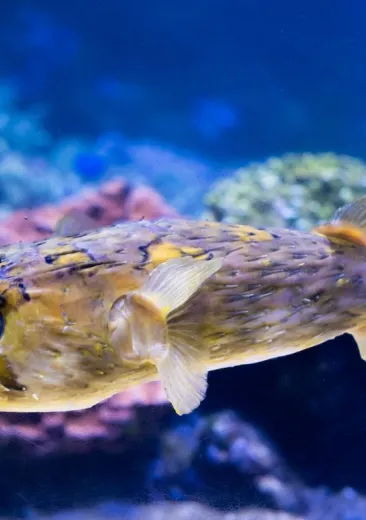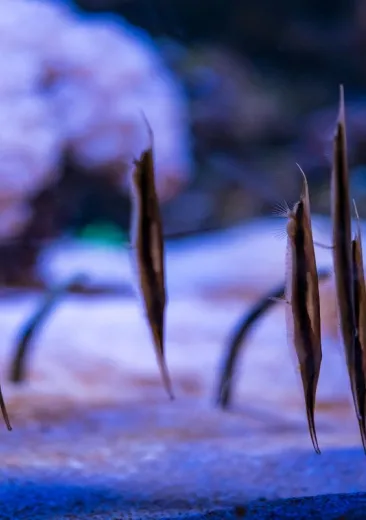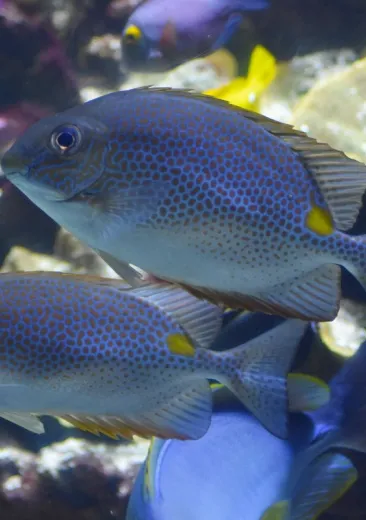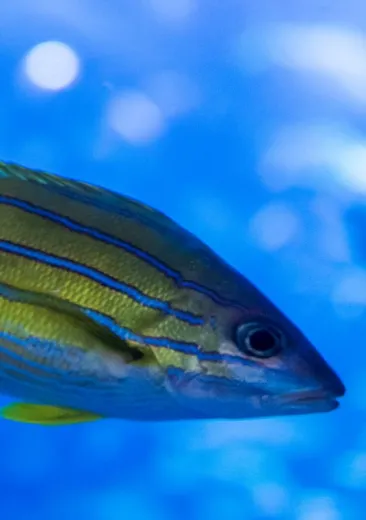Where is the animal to be found?
The yellow clown goby is a small yellow fish that is common in the Indo-Pacific and lives in coral reefs near Acropora corals. It lingers around coral branches and sometimes settles on them. It does not grow larger than 4 cm.
How can it be recognised?
Vivant en petits groupes de 5 à 15 individus, le gobie jaune a la particularité
The yellow clown goby lives in small groups of 5 to 15 individuals and has the particularity of producing a bitter mucus on its body, which acts as an effective protection against predators! The yellow colour of its coat, which is too conspicuous for it to remain hidden, is said to convey a visual message: "Beware I am toxic" - this is called aposematism.
What is distinctive about it?
The yellow clown goby is a protogynous hermaphrodite like the clownfish. This means that the yellow clown goby can change its gender from male to female. The yellow clown goby is a bi-directional hermaphrodite, i.e. it changes gender when necessary. Isn't that amazing?
This means that in the presence of two female gobies, the larger one becomes male and in the presence of two male gobies, the smaller one becomes female.
Cela signifie qu’en présence de deux gobies femelles, la plus grande devient mâle et qu’en présence de deux gobies mâles, le plus petit devient femelle.

